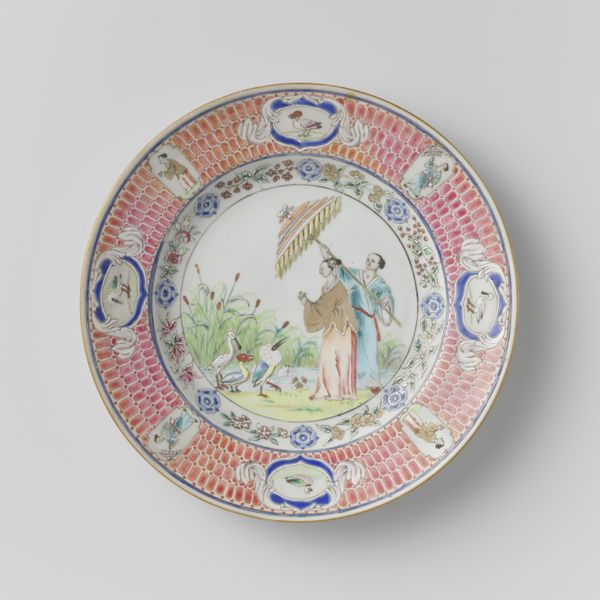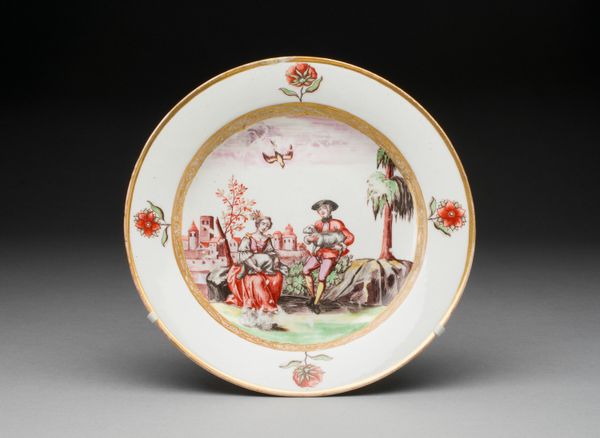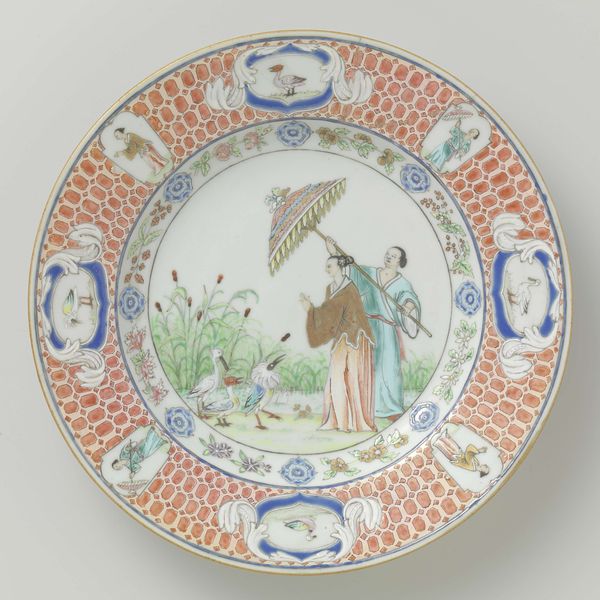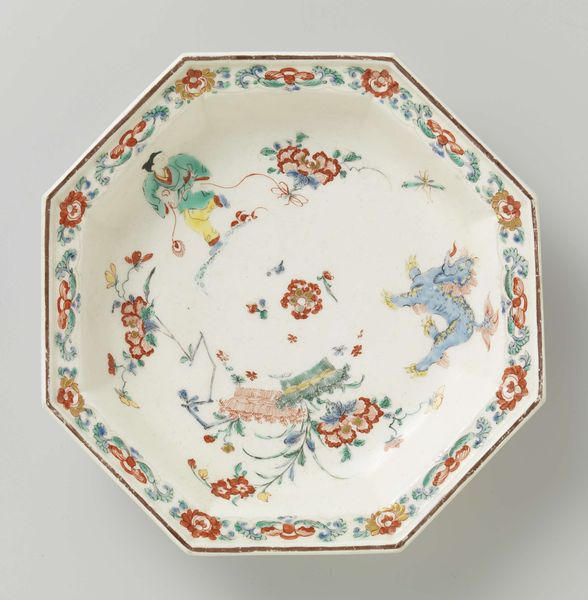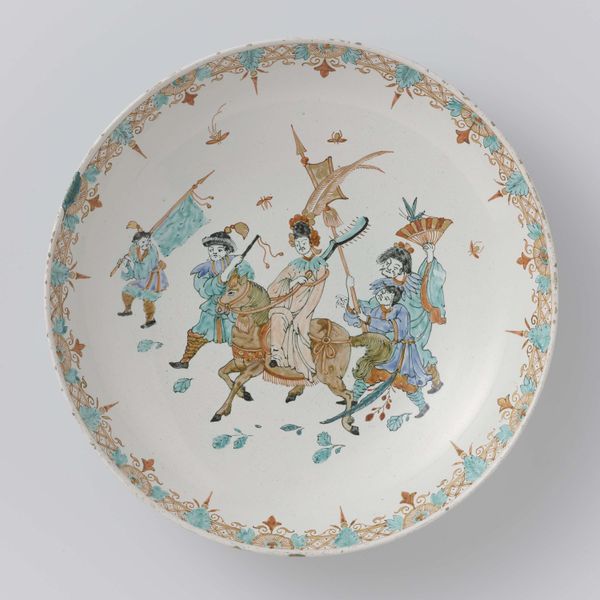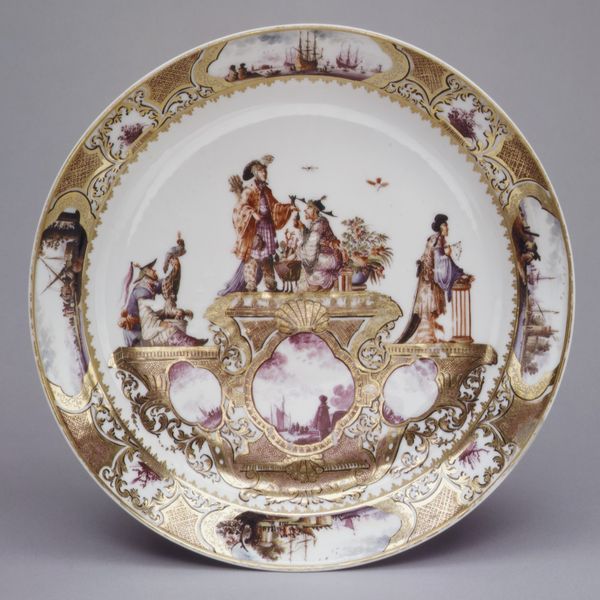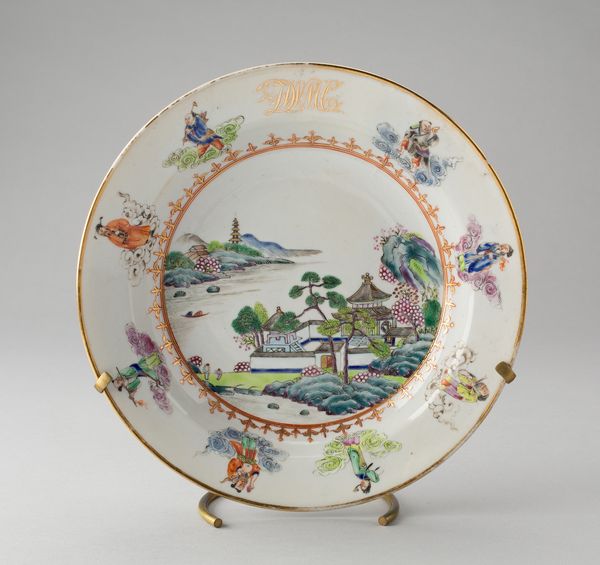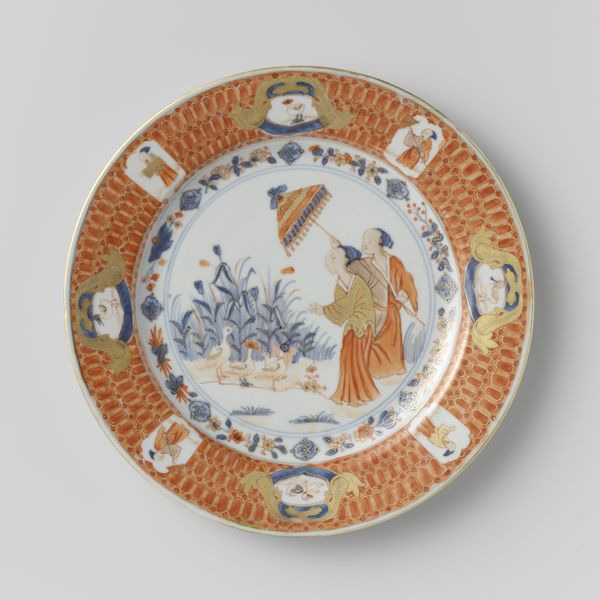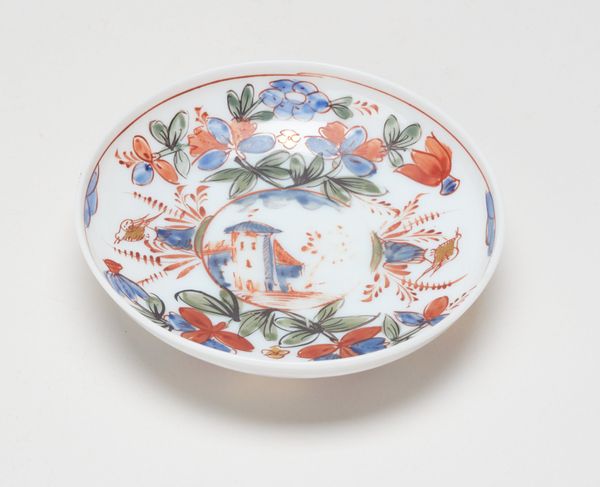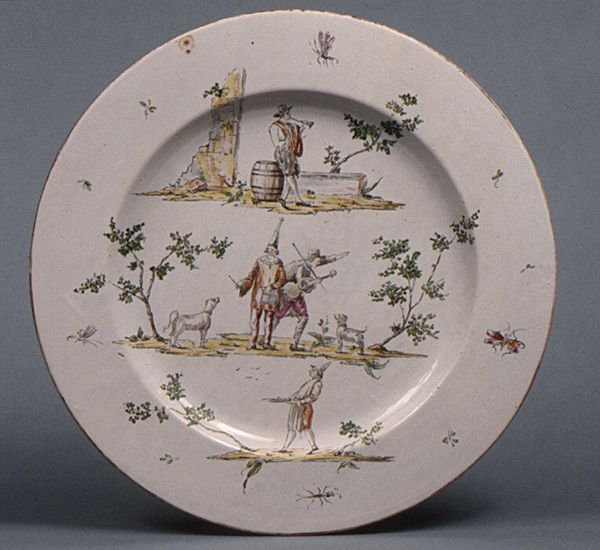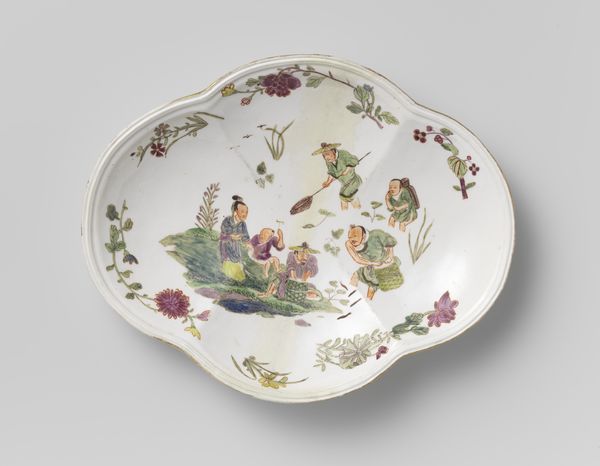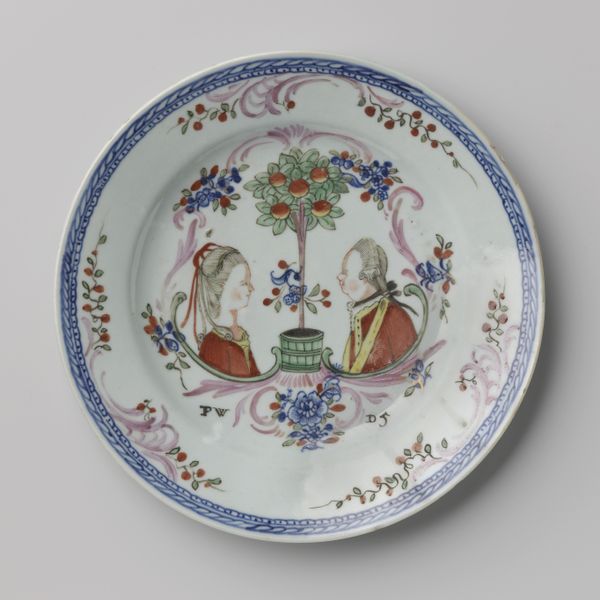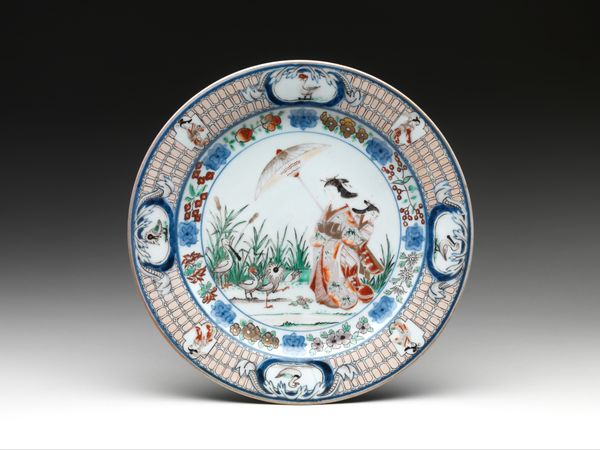
painting, ceramic, watercolor, earthenware
#
painting
#
ceramic
#
watercolor
#
earthenware
#
ceramic
#
earthenware
#
genre-painting
#
history-painting
#
rococo
Copyright: Rijks Museum: Open Domain
Curator: What grabs you first about this decorated dish, would you say? The frenetic violence in the center, or that incredible floral border? Editor: Definitely the chaos. There's something unsettling about seeing such a visceral scene on a plate. It’s…domestic violence as tableware? It feels both whimsical and deeply wrong. Curator: It does have a disquieting effect. This earthenware dish, created sometime between 1740 and 1760, depicts a scene titled "Dish with Moses Defending the Daughters of Jethro." What are your thoughts on it, Iconographer? Editor: The depiction of violence on everyday objects is always striking, playing on the subconscious link between nourishment and potential harm. The image shows Moses coming to the rescue of the seven daughters of Jethro who were being accosted by shepherds. This particular telling of it emphasizes the protective role of the heroic male figure, a prevalent theme throughout history, that manifests visually as patriarchal values. Curator: You know, it is a beautiful thing, technically. The Rococo influence is so strong. Editor: Rococo as in 'late baroque.' That seems very aligned with the style's goal to use spectacle and beauty to mask its often unpleasant themes. Speaking to the scene again, one might wonder if there is an implicit social critique, or perhaps even approval of violent male protection embedded within the picture, further heightened by the domestic object on which it is printed. Are we being served righteousness on a platter here? Curator: I hadn’t thought of it that way! The whole scene is definitely ripe with dramatic tension, and yes, this particular arrangement, upon the dining ware… How do you think viewers back then responded to it? Editor: It depends. Some likely interpreted it literally, as a valorous deed— Moses standing up to bullying shepherds and thus rescuing women, reflecting an ideal of masculine strength. Others may have observed this representation ironically or allegorically. I can see it serving to reinforce religious and gendered narratives, though I hope a few paused long enough to critically assess its implications, even then! Curator: It’s an intense scene presented in a rather delicate medium and artistic style, an interesting tension indeed. I certainly view it very differently now, knowing its underlying commentary. Editor: Precisely! That's the enduring power of art: prompting reflection, inviting interrogation, even across centuries and cultural divides. Even a ceramic plate of this vintage.
Comments
No comments
Be the first to comment and join the conversation on the ultimate creative platform.
